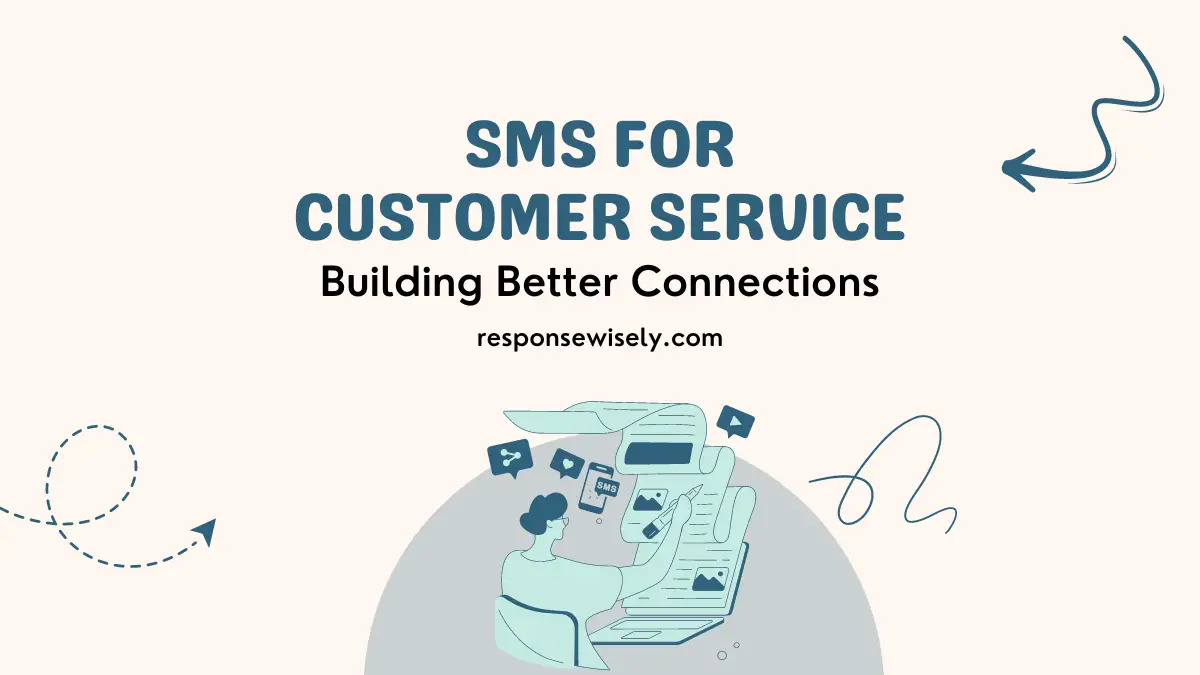In today’s rapid digital world, SMS has become a powerful tool for businesses to enhance customer service. As a seasoned expert in the field, I’ve seen firsthand the impact that SMS can have on building better connections with customers. From quick responses to personalized interactions, SMS allows businesses to engage with customers in a convenient and effective way.
With SMS, businesses have the opportunity to provide real-time support and address customer inquiries promptly. As I investigate deeper into the benefits and strategies of using SMS for customer service, you’ll discover how this communication channel can revolutionize the way you connect with your audience. Stay tuned as I share my insights on leveraging SMS to create meaningful and lasting relationships with your customers.
Importance of SMS for Customer Service
Real-time Communication
SMS allows businesses to engage in instant communication with customers, leading to faster response times and improved service efficiency.
Convenient and Accessible
Customers can easily reach out to businesses via SMS at their convenience, eliminating the need to wait on hold or navigate through automated phone systems.
Personalized Customer Experience
| Real-time Communication | Convenient and Accessible | Personalized Customer Experience |
|---|---|---|
| Faster response times | Easy customer access | Tailored messages |
| Improved service efficiency | Eliminates wait times | Engaging customer experience |
Implementing SMS Strategies
Setting up an SMS Platform
When Implementing SMS Strategies, it’s crucial to have a reliable platform that can handle high volumes of messages efficiently.
Creating Automated Responses
Automated responses can help acknowledge customer inquiries instantly and provide basic information, improving response times and customer satisfaction.
Training Customer Service Representatives
Training Customer Service Representatives is essential to ensure they are well-versed in handling SMS interactions professionally and effectively.
By focusing on these aspects, businesses can enhance their customer service through SMS and build better connections with their audience.
Benefits of Using SMS for Customer Service
Increased Customer Satisfaction
Implementing SMS for customer service can lead to improved customer satisfaction due to its quick response times and convenience. Customers appreciate the instant communication it provides, resolving their queries promptly and enhancing overall experience.
Cost-Effective Solution
Utilizing SMS for customer service can be a cost-effective option for businesses, as it reduces expenses associated with traditional phone support. Sending text messages is often more economical than making phone calls, making it a budget-friendly choice.
Higher Engagement Rates
With SMS, businesses can experience Higher Engagement Rates compared to other customer service channels. Text messages have impressive open rates and are more likely to be read promptly by customers, leading to increased interactions and customer engagement.
Case Studies of Successful Implementation
Company A: Boosting Customer Retention
In a recent study, Company A integrated SMS into their customer service strategy and saw a 15% increase in customer retention rates within just three months.
Company B: Resolving Issues Efficiently
Company B streamlined their customer service operations by implementing SMS, resulting in a 30% decrease in response time and a 25% increase in customer satisfaction.
Key Takeaways
- SMS is a powerful tool for businesses to enhance customer service by providing real-time communication and personalized experiences.
- Implementing SMS strategies like automated responses and training customer service representatives can improve response times and customer satisfaction.
- Using SMS for customer service can increase customer satisfaction, be a cost-effective solution, and lead to higher engagement rates compared to traditional channels.
- Case studies show successful implementation of SMS in customer service, resulting in increased customer retention rates and improved response times.
Conclusion
Implementing SMS for customer service can significantly enhance customer retention rates, decrease response times, and boost overall customer satisfaction. The success stories of Company A and Company B demonstrate the tangible benefits of integrating SMS into customer service operations. By leveraging the power of SMS, businesses can build stronger connections with their customers and improve the overall customer experience. As technology continues to evolve, embracing SMS as a customer service tool is essential for staying competitive in today’s market. With its convenience and effectiveness, SMS is a valuable asset for businesses looking to provide top-notch customer service and foster long-lasting relationships with their clientele.
Frequently Asked Questions
How can SMS benefit customer service operations?
SMS can lead to improved customer retention, decreased response times, and increased customer satisfaction. For example, Company A saw a 15% boost in customer retention rates, while Company B achieved a 30% decrease in response time and a 25% increase in customer satisfaction by using SMS.
What are the key takeaways from the case studies mentioned?
Key takeaways include the positive impact of SMS on customer retention, response times, and satisfaction. Company A and Company B both saw significant improvements in these areas within months of implementing SMS for customer service.
How quickly can a company see results from integrating SMS into customer service operations?
Companies like Company A and Company B noticed improvements in customer retention, response times, and satisfaction within three months of integrating SMS. Results can vary depending on the company’s existing operations and customer engagement strategies.

